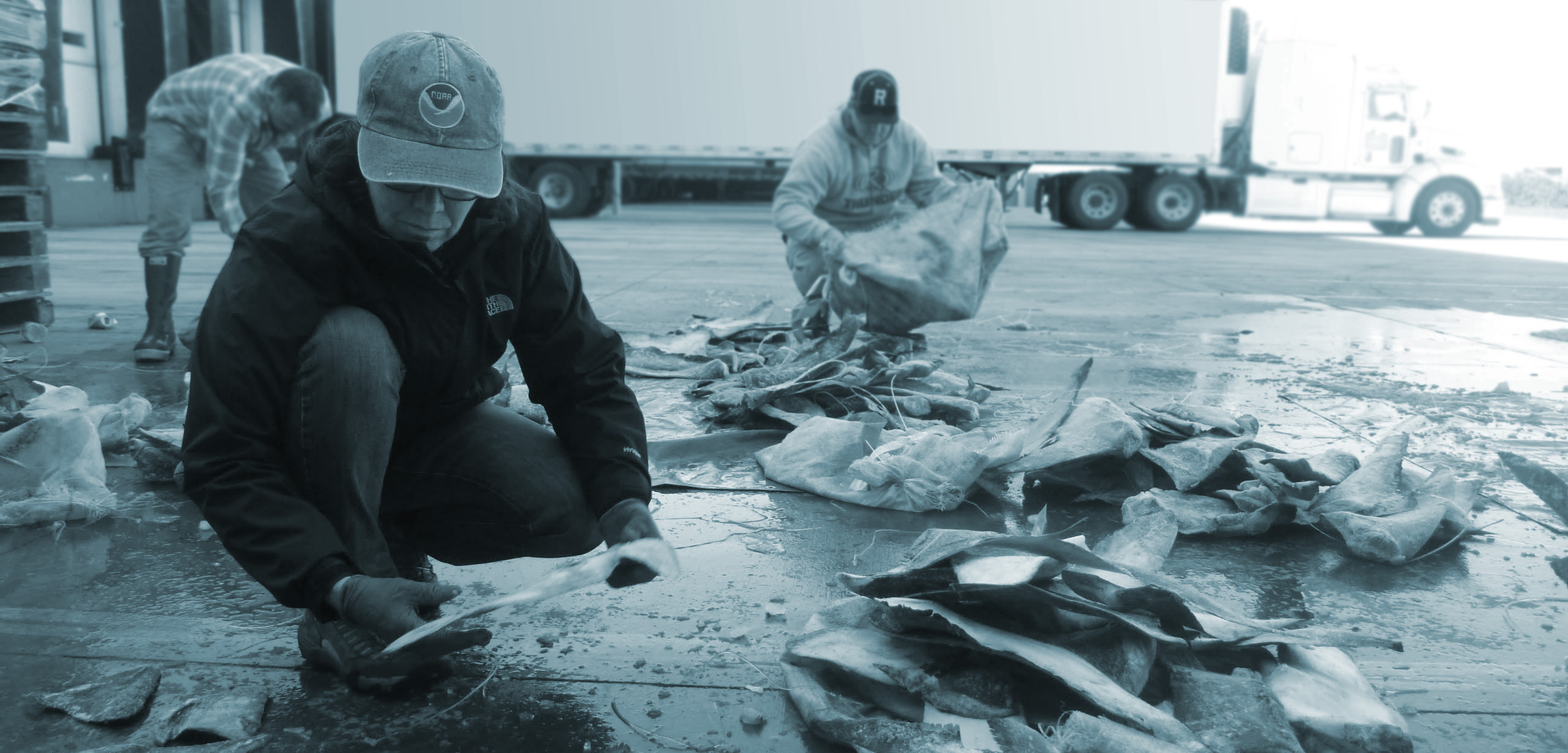Coastal Job: Marine Forensic Scientist
Kathy Moore uses DNA to determine the identity of marine animals seized by authorities.
Article body copy
Some people work in cubicles, others work in kitchens, but the most intriguing workplace of all may be the coast. Meet the people who head to the ocean instead of the office in our Coastal Jobs series.
Kathy Moore is a forensic scientist with the National Oceanic and Atmospheric Administration (NOAA). At the Northwest Fisheries Science Center’s forensic lab in Charleston, South Carolina, Moore analyzes genetic evidence from marine species to assist in civil and criminal cases involving suspected fisheries law violations, illegal wildlife trade, and seafood fraud.
On a good day, I get a box. Even 16 years into my job, I still get a rush of excitement when I see the evidence inside. Whether it has test tubes with dried biopsy samples or bags full of entire marine animals, every new box feels like a puzzle.
My team knows the specimens were obtained by special agents from NOAA or other wildlife organizations. Our job is to determine what species the samples represent and, occasionally, the geographic origins. We rigorously document our process so our findings are admissible in court. Major civil and criminal cases, sometimes involving millions of dollars and severe prison sentences, hinge on these results.
Sea turtle poaching once dominated our caseload, but in the early 2000s, authorities sent us lots of Vietnamese catfish they had seized from importers who were calling it grouper and selling it for 20 times its real value without the appropriate tariffs. We’ve seen more seafood cases since 2018. That’s when the US government imposed new requirements on importers to keep records on where and how certain species are harvested and processed. When importers lie about their catch, saying it’s one species when it’s really another, our lab reveals the truth. We’ve also worked on cases involving the illegal import and sale of whale sushi, which is banned in the United States.
Our detective work begins with DNA. Even with small samples—a couple of fish scales will do—we can take a bit of DNA, replicate it, sequence it, and compare it to references in genetic databases. Sometimes there’s a direct match. Other times, we have to calculate how close our sample is to the nearest known species.
I just built a database for a case involving red snapper. Technically, there’s only one species—Lutjanus campechanus—that can be legally called red snapper in the US seafood trade. But there are a lot of similar species, like vermillion, pink, and crimson—what we call “red-ish” snappers. So I pulled in DNA sequences for snappers from around the globe for comparison. A database like this can take a couple of days or weeks to build, and it’s easy to get sucked in. I kept telling myself I needed to stop and make dinner, but it’s hard to stop because I love my job.
Sometimes we can also use forensic techniques to identify where samples originate. Years ago, I received some humpback whale bone carvings. The person who obtained them claimed the bones were found domestically, in Alaska. But agents thought they came from Tonga, which would mean illegal international trafficking. I didn’t know this before the case, but scientists have documented the genetic profiles of pretty much all of the main humpback populations. And it turns out, humpbacks almost never cross the equator. We worked with a lab that had published a giant compendium of humpback research and determined that our bones came from southern hemisphere whales—likely from a population that lives near Tonga.
Every day is different. Every box is different. And solving these genetic mysteries is just so much fun.

